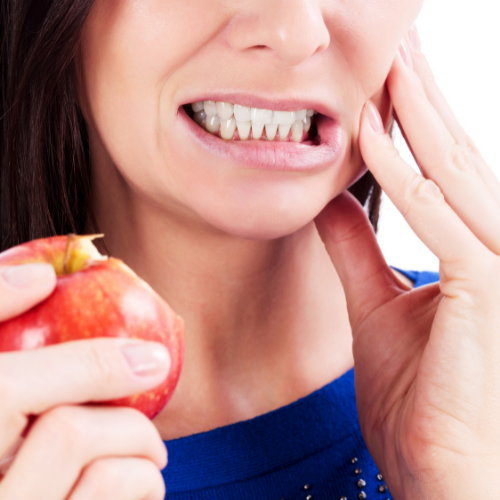Periodontal Disease
The word periodontal means “around the tooth”. Periodontal disease attacks the gums and the bone that support the teeth. Plaque is a sticky film of food debris, bacteria, and saliva. If plaque is not removed, it turns into calculus (tartar). When plaque and calculus are not removed, they begin to destroy the gums and bone. Periodontal disease is characterized by red, swollen, and bleeding gums. Most people are not aware of it because the disease is usually painless in the early stages.
Periodontal disease is most often preceded by gingivitis which is a bacterial infection of the gum tissue. A bacterial infection affects the gums when the toxins contained in plaque begin to irritate and inflame the gum tissues. Once this bacterial infection colonizes in the gum pockets between the teeth, it becomes much more difficult to remove and treat. Periodontal disease is a progressive condition that eventually leads to the destruction of the connective tissue and jawbone. If left untreated, it can cause shifting teeth, loose teeth, and eventually tooth loss. Periodontal disease is the leading cause of tooth loss among adults in the developed world and should always be promptly treated.
Not only is it the number one reason for tooth loss, but research also suggests that there may be a link between periodontal disease and other diseases such as, stroke, bacterial pneumonia, diabetes, cardiovascular disease, and increased risk during pregnancy. Researchers are determining if inflammation and bacteria associated with periodontal disease affects these systemic diseases and conditions. Smoking also increases the risk of periodontal disease. Good oral hygiene, a balanced diet, and regular dental visits can help reduce your risk of developing periodontal disease. Don't wait before it's too late, schedule an appointment with our periodontist in Overland Park.


Signs of Periodontal Disease:
Bleeding gums – Gums should never bleed, even when you brush vigorously or use dental floss.
Loose teeth – Also caused by bone loss or weakened periodontal fibers (fibers that support the tooth to the bone).
New spacing between teeth – Caused by bone loss.
Persistent bad breath – Caused by bacteria in the mouth.
Pus around the teeth and gums – Sign that there is an infection present.
Receding gums – Loss of gum around a tooth.
Red and puffy gums – Gums should never be red or swollen.
Tenderness or Discomfort – Plaque, calculus, and bacteria irritate the gums and teeth.